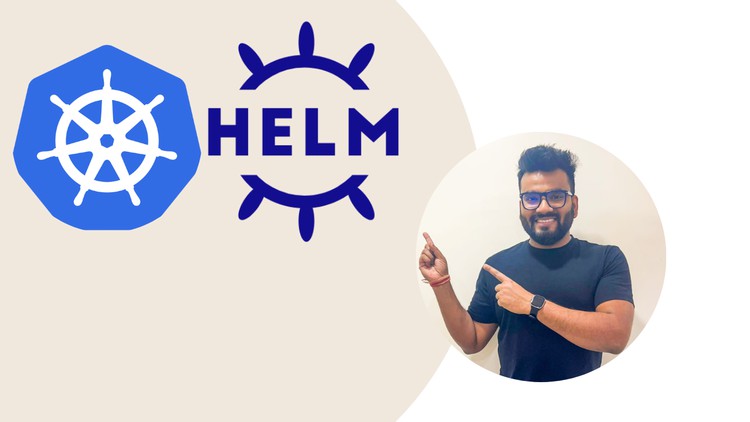HELM3 Chart - A Kubernetes Package Manager
- Description
- Curriculum
- FAQ
- Reviews
Helm helps you manage Kubernetes applications — Helm Charts help you define, install, and upgrade even the most complex Kubernetes application.
Charts are easy to create, version, share, and publish — so start using Helm and stop the copy-and-paste.
Helm is a tool for managing Kubernetes packages called charts. Helm can do the following:
- Create new charts from scratch
- Package charts into chart archive (tgz) files
- Interact with chart repositories where charts are stored
- Install and uninstall charts into an existing Kubernetes cluster
- Manage the release cycle of charts that have been installed with Helm
As a developer of Infrastructure enthusiast dealing with deployment in Kubernetes cluster then this course is for you, we have condensed down years of learning covering only what’s needed to get started with Helm.
This course is for any one who has dealt with Kubernetes deployment into one or more projects and would like to learn the best practises of package management via HELM Deployment.
Adding HELM knowledge in your portfolio will not only increase the number of opportunities you will get but also your knowledge around the best & efficient way to automate kubernetes object deployment like services, pods, deployment, statefulsets.
Be it deployment of your custom API or ELK stack, this course will help you to learn nuts & bolts of HELM and can assure you will be able to apply the learning right from the session1.
What will you learn over the next few hours and How the course is shaped?
- HELM Architecture and it’s evolution
- Why not deploying application via Kubectl Apply -f *yaml
- Difference between HELM and Kubectl Deployment
- When you should use HELM as a package manager
- What is HELM and what it is not
- Write HELM Chart from scratch for your custom application
- HELM directory structure
- Use of:
- Values.yaml
- Charts.yaml
- Template folder
- helper template file
- NOTES.txt
- How to convert your existing kubernetes manifest into HELM chart
- Variables existing hard coded manifest value into reusable template
- HELM release/versioning/rollback
- HELM dry-run to validate templates before deploying into actual environment
- Deploy PostgresSQL via HELM
- Pull HELM charts from public repo and deploy on a cluster
- Test Kubernetes chart – HELM Test
-
6Helm Directory StructureVideo lesson
-
7Deploy namespace via Helm chartVideo lesson
-
8Helm lint/List/InstallVideo lesson
-
9Helm Rollback // Upgrade // HistoryVideo lesson
-
10Helm UninstallVideo lesson
-
11Helm Upgrade InstallVideo lesson
-
12Variables config via Values.yamlVideo lesson
-
13Helm NotesVideo lesson
-
14Helm _helpers.tplVideo lesson
-
15Deploy Nginx via PODVideo lesson
-
16Map a config mapVideo lesson
-
17range statement to create multiple resourcesVideo lesson
-
18use _with statementVideo lesson
-
19if else statementVideo lesson
-
20OR statement with IF-ElseVideo lesson
-
21reduce code repetition with $Video lesson
-
22use {{- range }} for multiple port numberVideo lesson
-
23IF Statement to Create ingressVideo lesson
-
24Create a network policy via IF -eq statementVideo lesson
-
25Passing a secret via values.yml fileVideo lesson
-
26Generate Dynamic values in secretVideo lesson
-
27Create common labels for all the resourcesVideo lesson
-
28Create secrets based of conditionsVideo lesson
-
29Create/Delete resource based on flags (Pod Disruption Budget)Video lesson
-
30--atomic & --timeout 20 flags for error and rolloutVideo lesson
-
31Postgres via HELM in 5 minVideo lesson
-
32Looping - Range with $key $ valueVideo lesson
-
33Overwrite value using fileVideo lesson
-
34Connect to postgresql and create schemaVideo lesson
-
35HELM Remote Repo - PostgressVideo lesson
-
36HELM chart using the public repoVideo lesson
-
37HELM Registries : OCI package distributionVideo lesson
-
38Create a container registry to push helm chartVideo lesson
-
39Package your helm & push it to OCI registryVideo lesson
-
40HELM Secret ManagementVideo lesson

External Links May Contain Affiliate Links read more





